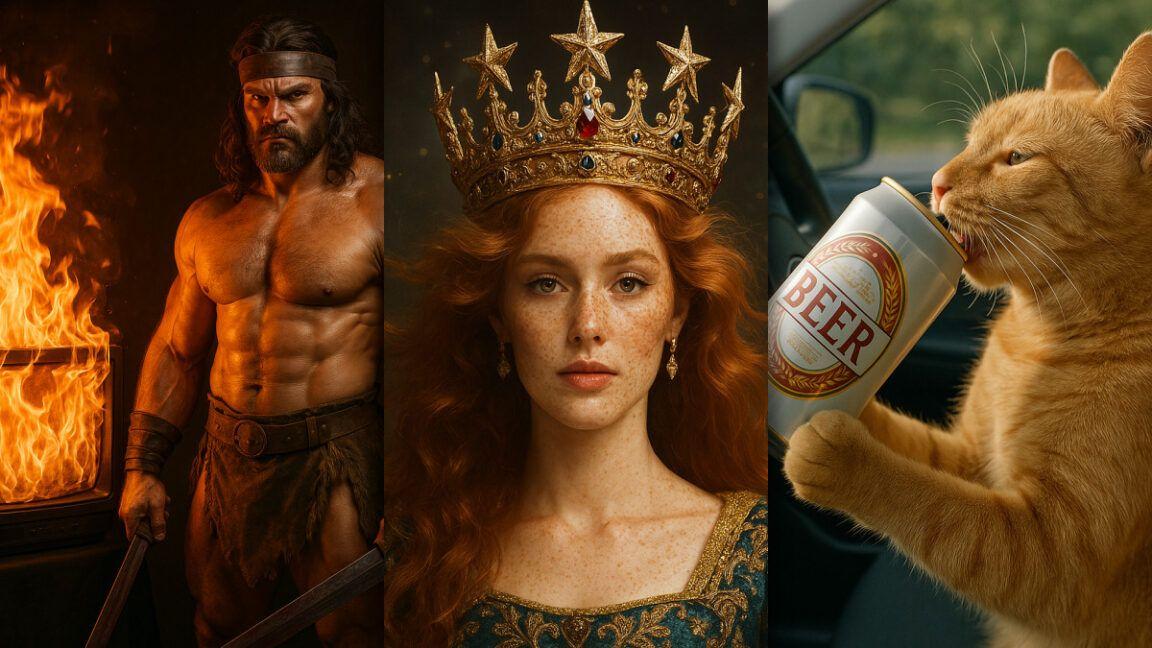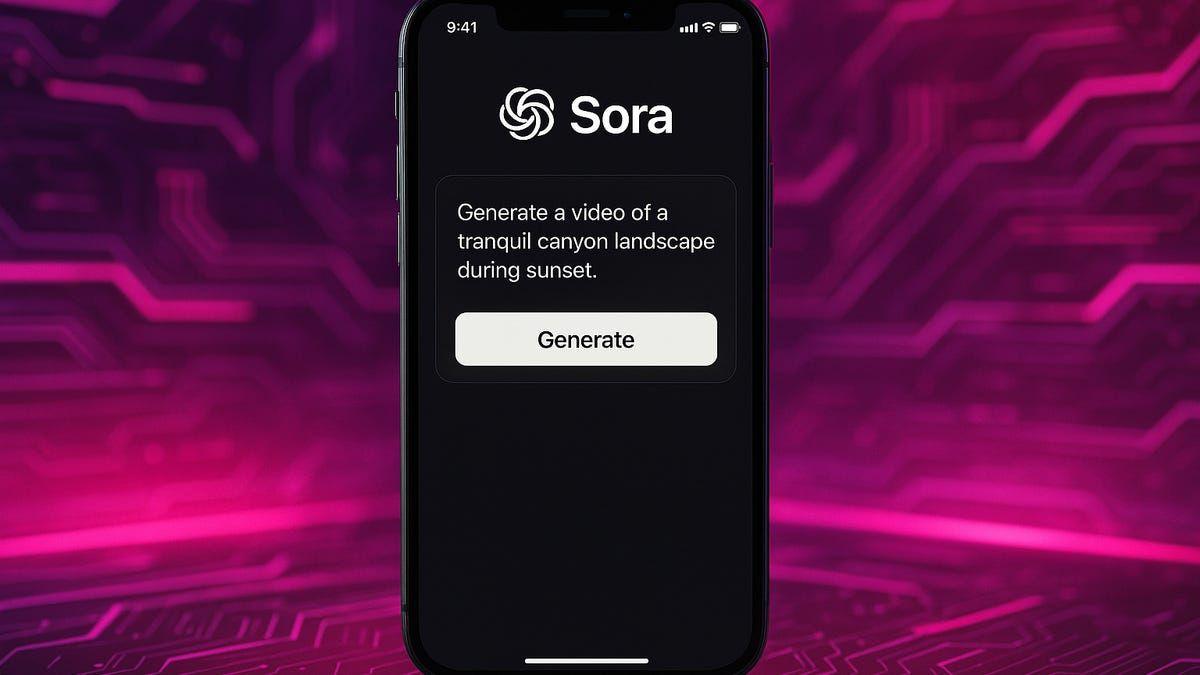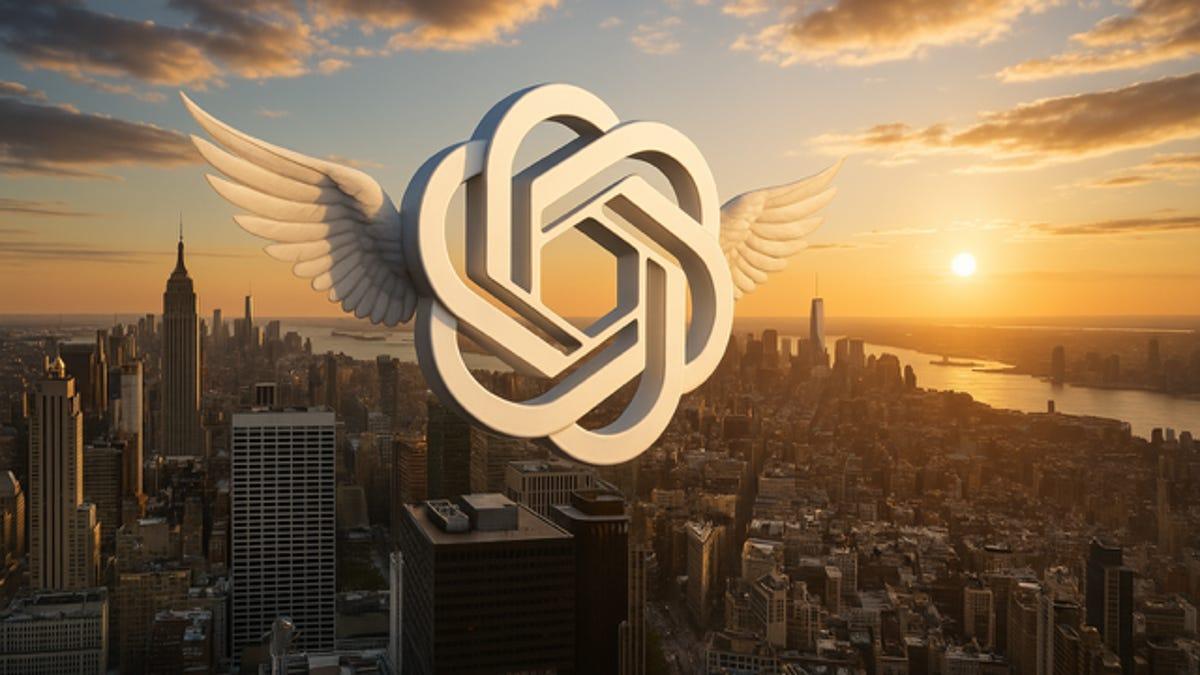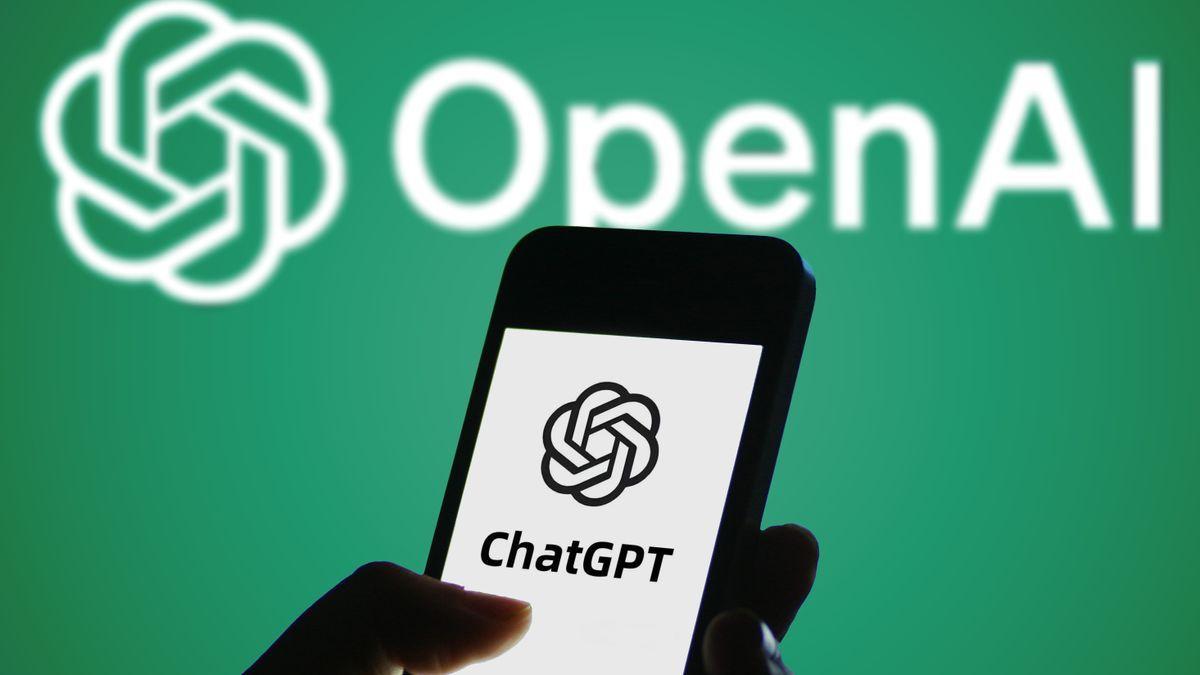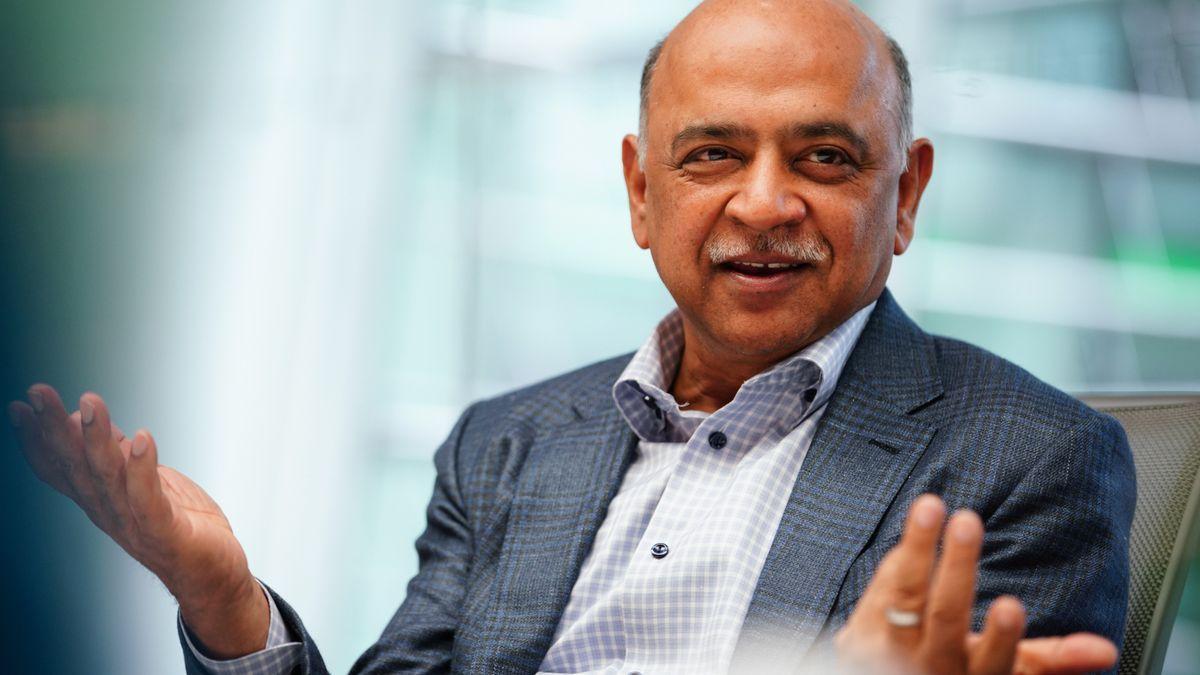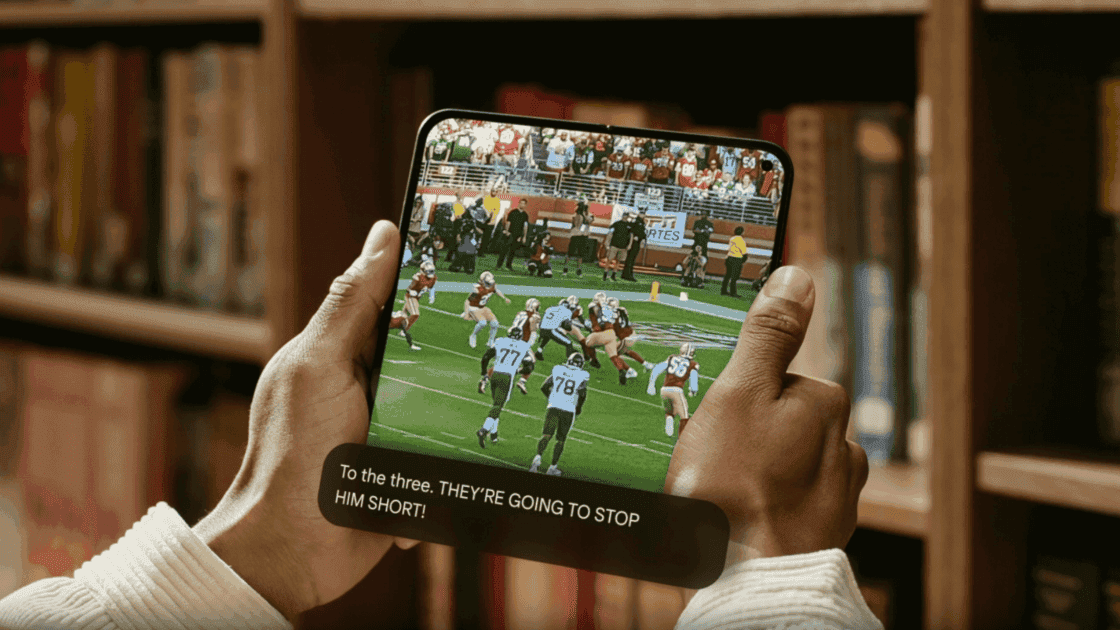OpenAI's ChatGPT Image Generator Expands to Developers and Major Tech Platforms
11 Sources
11 Sources
[1]
OpenAI makes its upgraded image generator available to developers | TechCrunch
OpenAI on Wednesday brought the tech behind its new and improved image generation feature in ChatGPT to its API, allowing developers to integrate it into their apps and services. OpenAI's new image generator, which launched for most ChatGPT users in late March, went viral for its ability to create realistic Ghibli-style photos and "AI action figures." It's been a mixed blessing for OpenAI, leading to millions of new signups for ChatGPT while also greatly straining the company's capacity. Over 130 million ChatGPT users created more than 700 million images in just the first week of the tool's availability, according to the company. In OpenAI's API, the image generation capability is powered by an AI model called "gpt-image-1." A natively multimodal model, gpt-image-1 can create images across different styles, follow custom guidelines, leverage world knowledge, and render text. Developers can generate multiple images at a time using gpt-image-1, and control the generation quality -- and therefore speed. According to OpenAI, gpt-image-1 employs the same safety guardrails as image generation in ChatGPT, including safeguards that restrict the model from generating content that runs afoul of the company's policies. Developers can control moderation sensitivity, which can be set to "auto" for standard filtering or "low" for less restrictive filtering. Low filtering limits fewer categories of potentially age-inappropriate content, per OpenAI documentation provided to TechCrunch. OpenAI also says that all images created with gpt-image-1 are watermarked with C2PA metadata so they can be identified as AI-generated by supported platforms and apps. Pricing is $5 per million input tokens for text and $10 per million input tokens for images, and $40 per million output tokens for images. (Tokens are the raw bits of data that the model processes.) That translates to around 2 cents, 7 cents, and 19 cents per generated image for low-, medium-, and high-quality square images, respectively, according to OpenAI. OpenAI says that companies including Adobe, Airtable, Wix, Instacart, GoDaddy, Canva, and Figma are already using or experimenting with gpt-image-1. Figma's Figma Design platform, for example, now lets users generate and edit images via gpt-image-1, while Instacart is testing the model for images for recipes and shopping lists.
[2]
ChatGPT's Image Generator Is Coming to More Gen AI Tools
The ability to make images directly in ChatGPT caused a huge spike in usage and spawned trends like people turning themselves into action figures. OpenAI said more than 130 million users worldwide created more than 700 million images in the first week after the feature launched. Now OpenAI is releasing the image model, dubbed gpt-image-1, into its API, meaning developers can add the image-generating feature to their products and tools. Those developers include Adobe, which will provide access to the model in its Firefly and Express apps, according to OpenAI's blog post. Other design tools using the model include Figma, HeyGen and Wix. Read also: AI Essentials: 27 Ways to Make Gen AI Work for You, According to Our Experts Microsoft, meanwhile, announced that OpenAI's GPT-4o image generation feature would now be available in its Microsoft 365 Copilot app through a new "Create" experience. The tool can make images from prompts, turn PowerPoint presentations into videos and more. On the text side, OpenAI rolled out a host of new models last week. That includes GPT-4.1, new models available to developers that can handle more information and work more quickly, and OpenAI o3, reasoning models that promise improved performance in coding, math and visual understanding. This recent run of announcements by OpenAI is the latest move in a race with Google for the lead in the gen AI market. Google's Gemini has its own image-generation features with a model called Imagen 3, announced earlier this month at Google Cloud Next 2025.
[3]
ChatGPT Expands Image Tools to More Devs and Apps
That includes Adobe, which said Thursday it was partnering with OpenAI and Google to add more AI models to its Firefly tool. The ability to make images directly in ChatGPT caused a huge spike in usage and spawned trends like people turning themselves into action figures. OpenAI said more than 130 million users worldwide created more than 700 million images in the first week after the feature launched. Now OpenAI is releasing the image model, dubbed gpt-image-1, into its API, meaning developers can add the image-generating feature to their products and tools. In addition to Adobe, design tools using the model include Figma, HeyGen and Wix, according to OpenAI's blog post. Read also: AI Essentials: 27 Ways to Make Gen AI Work for You, According to Our Experts Having the image model in the API allows developers more flexibility. OpenAI said developers can control the image quality or generation speed, the sensitivity of moderation, the number of images created, and whether the background is transparent or opaque. They'll also be able to choose the output file format. Microsoft, meanwhile, announced that OpenAI's GPT-4o image generation feature would now be available in its Microsoft 365 Copilot app through a new "Create" experience. The tool can make images from prompts, turn PowerPoint presentations into videos and more. On the text side, OpenAI rolled out a host of new models last week. That includes GPT-4.1, new models available to developers that can handle more information and work more quickly, and OpenAI o3, reasoning models that promise improved performance in coding, math and visual understanding. This recent run of announcements by OpenAI is the latest move in a race with Google for the lead in the gen AI market. Google's Gemini has its own image-generation features with a model called Imagen 3, improvements to which were announced earlier this month at Google Cloud Next 2025.
[4]
Adobe and Figma tools are getting ChatGPT's upgraded image generation model
Jay Peters is a news editor covering technology, gaming, and more. He joined The Verge in 2019 after nearly two years at Techmeme. OpenAI's upgraded image generator in ChatGPT brought a surge of users to the AI service thanks to its ability to create Studio Ghibli-style images and really dull dolls, and now it's coming to other apps. The company says the same "natively multimodal model" powering the image generator will be accessible in its API via "gpt-image-1," according to a blog post, and some major names have already signed up to use it. "The model's versatility allows it to create images across diverse styles, faithfully follow custom guidelines, leverage world knowledge, and accurately render text - unlocking countless practical applications across multiple domains," OpenAI says. Companies like Adobe and Figma are already incorporating the model into their tools. Here's how, per the blog post: Adobe's leading ecosystem of creative tools including its Firefly and Express apps will provide access to OpenAI's image generation capabilities, giving creators the choice and flexibility to experiment with different aesthetic styles - something business professionals, consumers and creators all value when generating new creative ideas. Figma is leveraging the latest model to bring advanced image generation and editing capabilities across its platform. Rolling out starting today, users can use 'gpt-image-1' in Figma Design to generate and edit images from simple prompt - adjusting styles, adding or removing objects, expanding backgrounds, and more. This new integration lets designers rapidly explore ideas and iterate visually, all in Figma. OpenAI says that it's also "continuing to work with developers and businesses to uncover more ways image generation in the API can serve their use cases," including with Canva, GoDaddy, and Instacart. The "gpt-image-1" model will initially be available via OpenAI's Images API, and the company says support for the Responses API is "coming soon."
[5]
ChatGPT's Image Generator Is Coming to Adobe Firefly, Figma, More
Some of the early adopters include Adobe, Figma, Quora, and Wix. Figma began rolling out the gpt-image-1 model in Figma Design yesterday, which will allow designers to "rapidly explore ideas and iterate visually, all in Figma," OpenAI says. The gpt-image-1 model is also available in Wixel, which is Wix's AI-powered platform for designing images, templates, and other visuals. Soon, it will be added to Adobe's Firefly and Express apps and be the default image model on Quora. "The model's versatility allows it to create images across diverse styles, faithfully follow custom guidelines, leverage world knowledge, and accurately render text -- unlocking countless practical applications across multiple domains," OpenAI says. Canva, GoDaddy, Instacart, and HubSpot are also exploring ways to use the image generator on their platforms. For each square image generated using its model, OpenAI will charge the companies about $0.02, $0.07, and $0.19 for low, medium, and high-quality images, respectively. The company says it won't use customer API data for AI training by default. ChatGPT's image generator arrived earlier this month, and in the first week, around 130 million users generated over 700 million images. Studio Ghibli-inspired images were trending on social media, though some outputs were quite disturbing. After initially making the AI tool free for all users, OpenAI had to pause it for free users due to high demand. It's back now for free users, but people are limited to three images per day.
[6]
OpenAI makes ChatGPT's image generation available as API
People can now natively incorporate Studio Ghibli-inspired pictures generated by ChatGPT into their businesses. OpenAI has added the model behind its wildly popular image generation tool, used in ChatGPT, to its API. The gpt-image-1 model will allow developers and enterprises to "integrate high-quality, professional-grade image generation directly into their own tools and platforms." "The model's versatility allows it to create images across diverse styles, faithfully follow custom guidelines, leverage world knowledge, and accurately render text -- unlocking countless practical applications across multiple domains," OpenAI said in a blog post. Pricing for the API separates tokens for text and images. Text input tokens, or the prompt text, will cost $5 per 1 million tokens. Image input tokens will be $10 per million tokens, while image output tokens, or the generated image, will be a whopping $40 per million tokens. Competitors like Stability AI offer a credit-based system for its API where one credit is equal to $0.01. Using its flagship Stable Image Ultra costs eight credits per generation. Google's image generation model, Imagen, charges paying users $0.03 per image generated using the Gemini API. The company said image generation in the chat platform "quickly became one of our most popular features." OpenAI said over 130 million users have accessed the feature and created 700 million photos in the first week alone. However, this popularity also presented OpenAI with some challenges. Social media users quickly discovered that they could prompt ChatGPT to generate images inspired by the Japanese animation juggernaut Studio Ghibli, and as a result, my social media feeds were filled with the same photos for the entire weekend. The trend prompted OpenAI CEO Sam Altman to claim the company's GPUs "are melting." OpenAI previously added its image model DALL-E 3 on ChatGPT. That model was a diffusion transformer model rather than the native multimodal understanding that GPT-4o has. Enterprise use cases Enterprises want the ability to generate images for their projects, and many don't want to open a separate application to do so. By adding the image model to its API, OpenAI allows enterprises to connect gpt-image-1 to their own ecosystems. OpenAI said it's already seen several enterprises and startups use the model for creative projects, products and experiences, naming several well-known brands in its blog post. Canva is reportedly exploring ways to integrate gpt-image-1 for its Canva AI and Magic Studio Tools. GoDaddy has already begun experimenting with image generation for customers to create their logos, and Airtable now enables enterprise marketing and creative teams to easily manage asset workflows at scale. OpenAI said gpt-image-1 will get the same safety guardrails on the API as in ChatGPT. The company said images generated with the model natively include metadata from the Coalition for Content Provenance and Authenticity (C2PA) that labels content as AI-generated and tracks ownership. OpenAI is part of C2PA's steering committee. Users can also control content moderation to generate images that best align with their brand. OpenAI promised that it will not use customer API data, including any images uploaded or generated by gpt-image-1 to train its models.
[7]
ChatGPT's Popular New Image Generator Coming to Adobe, Figma, Canva, and More
Alongside the new integration of OpenAI's GPT image generation inside Adobe Firefly and, eventually, other apps within the Creative Cloud ecosystem, OpenAI's ChatGPT image generation model is going to other apps, including Figma. ChatGPT's new "scarily good" AI image generation technology has been in the news lately as users turn their dogs into people, make action figures, and create controversial Studio Ghibli-inspired images. Per OpenAI, since it introduced image generation in ChatGPT last month, more than 130 million users created over 700 million images in just the first week of availability. Perhaps, then, the rapid expansion of the GPT image model is not too surprising. "Today, we're bringing the natively multimodal model that powers this experience in ChatGPT to the API via gpt-image-1, enabling developers and businesses to easily integrate high-quality, professional-grade image generation directly into their own tools and platforms," OpenAI explains. "The model's versatility allows it to create images across diverse styles, faithfully follow custom guidelines, leverage world knowledge, and accurately render text -- unlocking countless practical applications across multiple domains." One of the bigger integrations will arrive in the form of the GPT image model inside Adobe Firefly and Express, two commonly used apps by creators and businesses alike. Adobe competitor Figma is also getting in on the GPT image generation model fun. Figma is bringing OpenAI's new image generation tech to its platform for image generation and editing. "Rolling out starting today, users can use gpt-image-1 in Figma Design to generate and edit images from simple prompt-adjusting styles, adding or removing objects, expanding backgrounds, and more. This new integration lets designers rapidly explore ideas and iterate visually, all in Figma," OpenAI explains. However, GPT is also coming Canva AI and Magic Studio tools. GoDaddy is also exploring how to integrate image generation to allow its users to create logos, remove backgrounds, and generate custom typography. HubSpot is exploring OpenAI's image generation to help customers create marketing and sales materials. Instacart is even considering it for image generation, including images for recipes and shopping lists. OpenAI says its gpt-image-1 model in the available API features the same "safety guardrails as 40 image generation in ChatGPT, including safeguards that restrict the model from generation harmful images and the inclusion of C2PA metadata in generated images." Additional information on gpt-image-1 safety is available in a dedicated blog post. Using gpt-image-1 requires tokens, with text and image generation using separate tokens. OpenAI says it works out to about $0.02, $0.07, and $0.19 per generated image for low, medium, and high-quality square images. Pricing is detailed here. The gpt-image-1 model is available globally now.
[8]
OpenAI Brings Image Generation Model to API via gpt-image-1 | AIM Media House
The model can be applied across e-commerce, design, education, enterprise software, and gaming. OpenAI has announced the release of its multimodal image generation model, gpt-image-1, to the API, allowing developers and businesses to integrate image creation capabilities directly into their tools and platforms. The model, previously introduced in ChatGPT, supports image generation from text prompts, detailed editing, and accurate rendering of styles and text. "When we introduced image generation in ChatGPT last month, it quickly became one of our most popular features," OpenAI said, citing over 700 million images created by 130 million users in the first week. The gpt-image-1 model can be used across multiple domains such as e-commerce, design, education, enterprise software, and gaming. It supports functions including transforming sketches into polished visuals, editing existing images, and producing marketing content at scale. Adobe, Airtable, Figma, Gamma, HeyGen, OpusClip, Quora, Wix, Photoroom, and Playground are among the companies already leveraging the model. Adobe, for example, is embedding it in its Firefly and Express apps to allow users to explore different visual styles. Figma users can now edit images within the platform, adjusting elements like objects and backgrounds from text instructions. Airtable is using the model to scale creative workflows. "Enterprise marketing and creative teams [can] easily manage asset workflows at scale -- from generating campaign concepts, to remixing assets, to localising media for international markets," the company stated. OpusClip enables YouTube creators to generate thumbnails in one click, while Quora is replacing its existing image model with gpt-image-1 to improve generation quality. Photoroom is using it to create tools like Product Beautifier and Virtual Model for e-commerce visuals. New use cases are being tested by companies like Canva, GoDaddy, HubSpot, Instacart, and invideo AI. GoDaddy, for instance, is experimenting with logo generation and editable social media assets, while Instacart is exploring its application for recipe visuals and shopping list imagery. The gpt-image-1 API includes safety features such as harmful image prevention and embedded C2PA metadata. Developers can also adjust content moderation levels using the moderation parameter. Pricing is based on token usage. Text input costs $5 per million tokens, image input $10 per million tokens, and image output $40 per million tokens. "In practice, this translates to roughly $0.02, $0.07, and $0.19 per generated image for low, medium, and high-quality square images," OpenAI noted. The model is now available globally via the Images API. Some organisations may need to verify access before use. Developers can explore capabilities in the API playground and consult the image generation guide to get started.
[9]
OpenAI's upgraded image model is now available as API
OpenAI has made its upgraded image generator available to developers through its API, allowing them to integrate the technology into their applications and services. The move comes after the feature was introduced in ChatGPT in late March, generating significant interest and usage. The new image generator, powered by the "gpt-image-1" AI model, can create images in various styles, follow custom guidelines, and render text. It is a natively multimodal model, capable of leveraging world knowledge to produce realistic images. Developers can generate multiple images at once and control the quality and speed of generation. OpenAI has implemented safety measures to prevent the generation of content that violates its policies. The model includes safeguards similar to those used in ChatGPT's image generation feature, and developers can adjust moderation sensitivity to suit their needs. The sensitivity can be set to "auto" for standard filtering or "low" for less restrictive filtering, with the latter limiting fewer categories of potentially age-inappropriate content. Get your Studio Ghibli filter here: 5 AI tools that still work All images created using gpt-image-1 are watermarked with C2PA metadata, making them identifiable as AI-generated by supported platforms and applications. The pricing for the service is based on input and output tokens, with costs ranging from 2 cents to 19 cents per generated image, depending on the quality and size of the image. Several companies, including Adobe, Airtable, Wix, Instacart, GoDaddy, Canva, and Figma, are already utilizing or experimenting with gpt-image-1. For instance, Figma's design platform now allows users to generate and edit images using the model, while Instacart is testing it for generating images for recipes and shopping lists.
[10]
OpenAI's image generator is now open to businesses worldwide via API
OpenAI has launched the gpt-image-1 API, enabling developers to integrate ChatGPT's image generation capabilities into their products. The model supports diverse visual styles and applications in design, marketing, and education. It includes safety filters and privacy measures, with tiered pricing.In a major expansion of its AI capabilities, OpenAI has officially launched gpt-image-1, the multimodal model behind ChatGPT's image generation, to developers and businesses via API, chief executive Sam Altman confirmed the development on X. The move comes after the feature's debut last month, where over 130 million users generated more than 700 million images in just one week. The API version makes it possible for organisations to incorporate the model's image generation capabilities into their own products and services. OpenAI says the model is designed to support practical applications in fields like design, marketing, ecommerce, education, and gaming. Technical know-how gpt-image-1 is a multimodal AI model that can generate images from text prompts. It supports a range of visual styles, allows for detailed customisations, and is able to render text within images -- features that make it useful across several industries. Users can apply it to tasks such as visual design, content creation, product marketing, and more, the company said. Use cases As image generation capabilities become more accessible through the gpt-image-1 API, a number of companies across different sectors are already putting the technology to use. Several companies have begun experimenting with the model: Pricing and safety concerns The model uses a token-based pricing structure: $5 per million tokens for text input, $10 per million for image inputs, and $40 per million for image outputs. Based on typical usage, this amounts to approximately $0.02 to $0.19 per image, depending on quality and size. The API is now available globally, although some developers may need to verify their organisation before gaining access. OpenAI says the image generation tool includes built-in safety measures to help prevent harmful or inappropriate content from being created. These include filters that screen out unsafe material, and digital "tags" (called C2PA metadata) that show the image was made by AI. Developers who use the tool can also choose how strict the content filtering should be. Importantly, OpenAI doesn't use images or data from the API to train its models, helping protect users' privacy.
[11]
GPT-Image-1 API : OpenAI's Text-to-Image Model Launches
What if creating stunning, professional-grade images could be as simple as typing a sentence? With the advent of the OpenAI GPT-Image-1 API, this bold vision is now a reality. Imagine transforming a few descriptive words into breathtaking visuals or seamlessly editing an image to remove unwanted elements -- all with precision and ease. This new tool is not just a leap forward in AI-powered creativity; it's a redefinition of how we approach image generation and manipulation. Whether you're a designer crafting intricate compositions, a marketer building compelling campaigns, or a developer prototyping new ideas, the GPT-Image-1 API promises to streamline your workflow while unlocking unparalleled creative potential. In this overview All About AI explores the fantastic capabilities of the GPT-Image-1 API, from its text-to-image generation to its advanced inpainting and multi-image composition features. You'll discover how this tool enables users to innovate across industries, whether by creating dynamic scenes, customizing logos, or editing images with surgical precision. But that's not all -- its robust safety measures and intuitive integration ensure that even those with minimal technical expertise can harness its power responsibly. As we delve deeper, you'll see how this API is not just a tool but a fantastic option for reimagining what's possible in visual storytelling and design. The GPT-Image-1 API is designed with versatility and user-friendliness in mind, offering a suite of features tailored to meet diverse creative and professional needs: These features make the API an indispensable tool for developers, designers, and creators seeking to streamline their workflows and enhance their creative output. The GPT-Image-1 API extends beyond basic image generation, offering practical solutions for a wide range of creative and professional scenarios. Its capabilities can be applied in the following ways: These examples highlight the API's ability to handle complex tasks with efficiency, offering you the flexibility to innovate and experiment across various creative domains. Discover other guides from our vast content that could be of interest on OpenAI GPT-Image-1 API. The GPT-Image-1 API is engineered to be accessible and efficient, even for developers with limited technical expertise. Its implementation process is straightforward, supported by several key technical features: These features ensure a smooth development process while maintaining high ethical standards, making the API a reliable choice for developers and creators alike. While the GPT-Image-1 API offers a robust set of capabilities, there are certain limitations and requirements to consider when planning your projects: Understanding these factors will help you maximize the API's potential while adhering to its guidelines and requirements. The GPT-Image-1 API unlocks a wealth of possibilities for developers, designers, and creators across various industries. Its potential applications include: The API also delivers a seamless user experience, characterized by fast processing times, natural and realistic outputs, and the flexibility to explore diverse creative ideas. Its intuitive design ensures that both novice and experienced developers can use its capabilities effectively. The OpenAI GPT-Image-1 API represents a significant advancement in AI-driven image generation and editing. By combining innovative features like text-to-image generation, inpainting, and multi-image composition with user-friendly implementation and robust safety measures, it provides a reliable platform for innovation. Whether you're a developer, designer, or creative professional, this API equips you with the tools to push the boundaries of visual content creation. While minor limitations such as account verification and safety restrictions exist, they are outweighed by the API's ability to streamline workflows, inspire creativity, and deliver high-quality results.
Share
Share
Copy Link
OpenAI makes its advanced image generation model available to developers through its API, with major tech companies like Adobe, Figma, and Microsoft integrating the technology into their products.

OpenAI Releases Advanced Image Generation Model to Developers
OpenAI has made a significant move in the AI industry by releasing its upgraded image generation model, "gpt-image-1," to developers through its API. This development comes after the successful launch of the image generation feature in ChatGPT, which saw over 130 million users create more than 700 million images in its first week of availability
1
2
3
.Key Features of gpt-image-1
The new model, described as "natively multimodal," offers a range of capabilities:
- Creation of images across diverse styles
- Ability to follow custom guidelines
- Leveraging of world knowledge
- Accurate text rendering
Developers using the API can control various aspects of image generation, including quality, speed, moderation sensitivity, and output format
1
4
.Integration with Major Tech Platforms
Several prominent tech companies have already begun integrating gpt-image-1 into their products:
- Adobe: Incorporating the model into its Firefly and Express apps
2
5
. - Figma: Implementing advanced image generation and editing capabilities in Figma Design
1
4
. - Microsoft: Adding the feature to its Microsoft 365 Copilot app through a new "Create" experience
2
3
. - Other adopters: Wix, Quora, Canva, GoDaddy, Instacart, and HubSpot are also exploring or implementing the technology
4
5
.
Related Stories
Pricing and Safety Measures
OpenAI has set the pricing for gpt-image-1 at $5 per million input tokens for text, $10 per million input tokens for images, and $40 per million output tokens for images. This translates to approximately 2 cents, 7 cents, and 19 cents per generated image for low-, medium-, and high-quality square images, respectively
1
5
.To address safety concerns, OpenAI has implemented several measures:
- Employing the same safety guardrails as the ChatGPT image generation feature
- Allowing developers to control moderation sensitivity
- Watermarking all generated images with C2PA metadata for identification as AI-generated content
1
Impact on the AI Industry
The release of gpt-image-1 to developers marks another significant step in the ongoing competition between OpenAI and Google in the generative AI market. Google recently announced improvements to its own image generation model, Imagen 3, as part of its Gemini AI system
2
3
.This development is expected to accelerate the integration of advanced AI-powered image generation capabilities across a wide range of applications and industries, potentially transforming creative workflows and opening up new possibilities for visual content creation.
References
Summarized by
Navi
